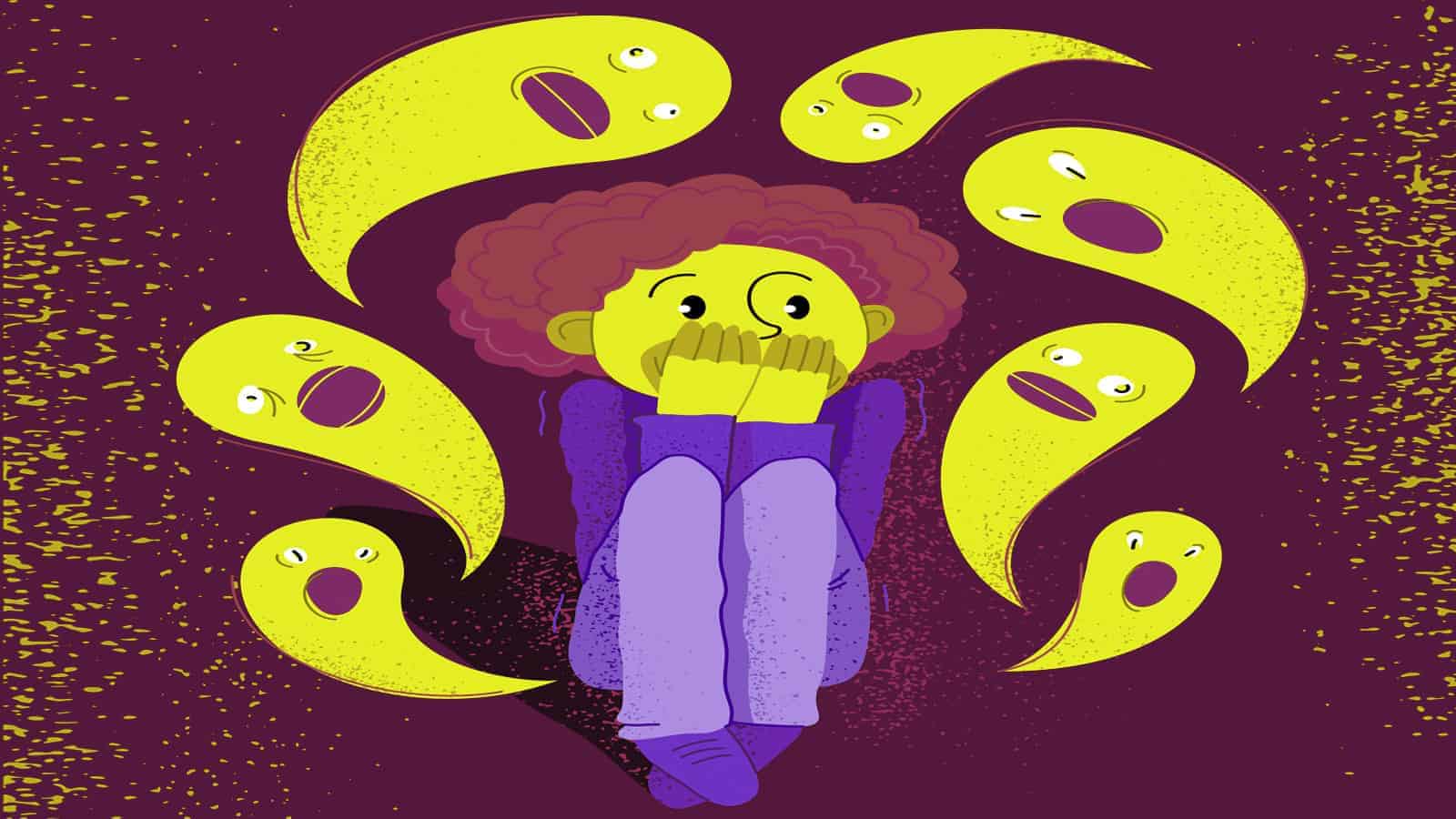Are you seeking new ways to manage panic attacks? Well, it turns out that you are not alone.
Cleveland Clinic estimates that eleven percent of the American population has had a panic attack. All panic attacks are characterized by a crushing sense of fear and physical symptoms that differ depending on the individual. If you suffer from panic attacks, take heart. According to science, there are different ways to manage panic attacks. Here are ten ways that may help you.
A better understanding can help you manage panic attacks.
Panic attacks cause a sudden feeling of fear, dread, or anxiety. They happen quickly and may include some physical reactions. You may feel like you have a heart attack, have trouble breathing, and sweat a lot. A panic attack is a primal reaction to danger when an individual subconsciously picks up a threat. Triggers for a panic attack can be random or be specific things linked to your past. If you worry about having a panic attack, it can cause another panic attack.
Panic attack symptoms may include the following:- Hot flashes
- Sweating
- Chills
- Tightness in our chest area
- Chest pain
- Feeling dizzy
- Lightheadedness
- Feeling faint
- Choking sensation
- Racing heart
- Pounding heart
- Tingling or numbness in your hands
- Nausea
- Trembling
- Feeling like you’re not in the present or disconnected
- Sense of fear and dread
- Like you’re losing control of your mind
- Hard to catch your breath
- Urge to run away
Who is more likely to have a panic attack?
A couple of things seem to play a role in those who experience panic attacks.
- Gender: Women are more likely than men to develop a panic disorder.
- Age: People of all ages get panic attacks. Most people experience their first panic attack when they’re a teenager or young adults.
The importance of diagnosis so you can start to manage panic attacks.
Certain health conditions mimic panic attacks. If you suffer from panic attacks, be sure to see your doctor. They will run tests to rule out health conditions such as respiratory problems, thyroid disease, or heart disease, which cause symptoms similar to a panic attack. Once your doctor has eliminated physical issues, they’ll give you an accurate diagnosis. Once you have a diagnosis, you can learn how to manage panic attacks.
What’s the difference between a panic attack and a panic disorder?
An NIH fact sheet estimates that around 2.7% of adults in the United States, aged eighteen and older, receive a panic disorder diagnosis each year. In fact, approximately 4.7% of adults in the U.S. will experience a panic disorder at some time in their lives. You may have one or two panic attacks in your life, and then they go away when whatever stress was causing them goes away. But if you continue to have panic attacks and wrestle with the fear of having another attack, good chance you have developed a panic disorder.
Ten ways to manage panic attacks, according to science
It’s essential to learn how to manage panic attacks so they don’t become a panic disorder.
1 – Breathing techniques can help manage panic attacks
One way to manage panic attacks is to try some breathing techniques. Close your eyes and focus on breathing this way. Breathe in through your nose slowly and deeply. Count to five for each breath. Then exhale slowly, counting for each breath you let out. These breathing techniques may help you calm down and feel peaceful even if you’re still experiencing panic attack symptoms. As you focus on your breathing, it helps your mind refocus into a more positive mindset.
2 – Reach out to family and friends
When you feel you’re going to have a panic attack, you can ease the fearful feelings by reaching out to a trusted friend or family member for support. Beforehand, let them know you struggle with panic attacks. Tell them what to say to you when you’re in the middle of a panic attack. They can say things like:
- Concentrate on your breathing
- Tell me what you need right now.
- Remember, it feels scary, but it’s not dangerous.
- Okay, you can get through this.
- I’m proud of you, and you can do this.
- These are your thoughts. It’s not the place that’s bothering you.
Reaching out for help can help switch your attention away from your fearful feelings.
3 – Manage panic attacks with meditation
You may find that meditation helps them manage panic attacks. Practicing daily meditation and relaxation techniques can give you a sense of calm and improve your overall mental health. Meditation helps reduce your panic attacks and gives you the ability to relax when you feel like an attack is coming on.
4 – Reduce stress in your life
Manage your panic attacks by reducing your everyday stress. Eat a balanced diet and stay hydrated. Avoid eating highly processed foods and foods high in sugar. Sugar can cause spikes in your blood sugar, which can increase feelings of irritation and anxiety. Overeating sugar can mimic a panic attack.
5 – Exercise regularly to manage panic attacks
The American Heart Association suggests at least thirty minutes of exercise five times a week for good heart health. That’s approximately 150 minutes per week. An elevated heart rate helps reduce your stress levels that can cause panic attacks. Plus, regular exercise boosts your mental health.
6 – Get plenty of sleep
Maintaining your health helps you manage panic attacks. One way to stay healthy and stress-free is to get enough sleep every night. It would be best if you tried to get anywhere from six to eight hours of sleep per night. Sleep promotes relaxation and helps your body recuperate from daily stress.
7 – Avoid caffeine
Caffeine stimulates your body so that you feel jittery. It can trigger panic attacks in people who are predisposed to anxiety. Caffeine is a diuretic, causing dehydration if you drink too much of it. Caffeine can cause sweaty palms, ringing in your ears, and a racing heart, which may lead to a panic attack.
8 – Avoid smoking and alcohol– they can impede your efforts to manage panic attacks
Cannabis, also known as marijuana, is known as a psychoactive drug. Most people think that smoking marijuana will reduce anxiety, but according to recent research, some people who smoke marijuana experience increased anxiety, panic, and psychosis. They also linked drinking too much alcohol to anxiety and panic attacks. If you drink or smoke, avoid these things to see if it helps you manage panic attacks. Having a panic attack isn’t your fault, but learning how to manage panic attacks with lifestyle changes can help you avoid them.
9 – Counseling to find triggers
Different things trigger panic attacks. Something as simple as seeing a car swerve to miss a squirrel could set off your panic attack. You go into a fight-or-flight mode as if you were being chased by a monster. There’s no real danger, but your mind and body feel like there is.
Meeting with a counselor can help you figure out what triggers your panic attacks and how to manage these triggers. A counselor can help you walk through the days, months, or years that led up to your first panic attack. It could be the death of a loved one, intense stress, or an accident. Having someone to talk to will help you unpack the complexities of your panic attacks.
10 – Psychotherapy to manage panic attacks
Psychology is a science of behavior and the mind. It includes studying feelings and thoughts. Psychologists suggest that Cognitive-Behavioral Therapy (CBT) is a helpful treatment for panic attacks. CBT helps you learn various ways to behave, think, and react to your feelings associated with a panic attack. This psychology of how to think prepares you to think differently about the physical sensations part of a panic attack. It equips you to resist the feelings of anxiety and fear so you can manage panic attacks.
Final thoughts on how you can manage panic attacks and live life to the fullest again
Panic attacks are common in the United States. If you experience the sudden rushing fear and anxiety of a panic attack, you know how debilitating it can be. You may have physical sensations of a racing heart, sweating palms, or nausea. These are typical symptoms and can’t hurt you. Learning how to manage panic attacks can limit your number of attacks. Creating a healthy lifestyle with a nutritious diet, exercise, and adequate sleep may reduce your panic attacks and improve your mental health.
Breathing techniques and seeking the help of trusted friends and family can also help you fight off panic attacks. You may want to meet with a counselor to figure out what triggers your panic attacks. Seek help if you cannot manage panic attacks yourself. Left untreated, you could develop a panic disorder that puts you at risk of suicide.

















 Community
Community

